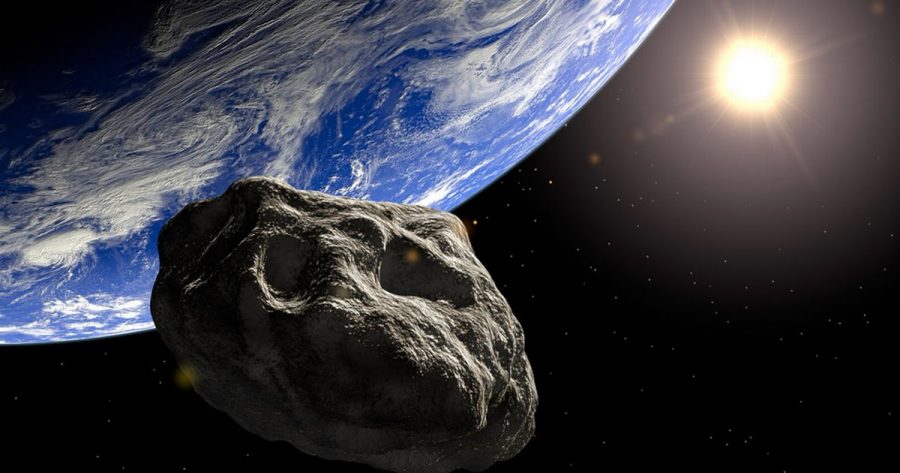Asteroid 2002 AJ129 will pass near Earth with its closest point being around 4.2 million kilometers (2.6 million miles) from the planet. The speed it is traveling at reaches up to 122.310 km/h (76.000 mph), putting in on the list of “faster than most near-Earth asteroids” according to NASA officials.
The asteroid is estimated to range between 500 and 1.200 meters (0.3 miles and 0.75 miles) in size. And it will only be visible from Spain at 10:30 pm. Nevertheless, the Virtual Telescope Project website will be transmitting live the view of the event, at 6 pm EST (2300 GMT).

The average distance between the Earth and the Moon is around 238.855 miles (384.400 km). The asteroid is expected to be no closer than ten times that distance.
14 years of tracking
The asteroid was discovered on January 15, 2002, by the Near-Earth Asteroid Tracking Project, sponsored by NASA, based then at the Maui Space Surveillance Site on Haleakala, Hawaii.
Manager of NASA’s Center for Near-Earth Object Studies at the Jet Propulsion Laboratory based in Pasadena, California, Paul Chodas, explains that the organization tracked the asteroid for about 14 years, meaning the orbit of the object is known very precisely. He also added that the possibility of the asteroid colliding with Earth is null, and it will probably stay like that for over a hundred years.
Notwithstanding, still the asteroid is cataloged as a “potentially hazardous” object by NASA considering it fills the frame that the term implies. It is larger than 140 meters (460 feet) in diameter, and its orbit is closer than 7.48 million km (4.65 million miles) to Earth.
Prepared for any situation
On November 3, 2017, NASA led an international team of astronomers to complete the “first global exercise using a real asteroid to tests global response capabilities.”
According to the Jet Propulsion Laboratory website, the TC4 Observation Campaign began when the European Southern Observatory spotted an asteroid that was thought to approach the Earth very closely during October. The primary goal was to “recover, track and characterize a real asteroid as a potential impactor,” and to put to the test the International Asteroid Warning Network.

The exercise focused on targetting asteroid 2012 TC4, which was somewhat a small body in the range between 10 and 30 meters long in size (30 and 100 feet). The object passed the Earth without any significant issues and the orbit, its shape, composition, and rotation were studied by astronomers from around the world.
Co-manager of the Near-Earth Object segment in the European Space Agency, Detlef Koschny, claimed the results of the exercise showed the well-prepared organization and communication of the alliance. He argues:
“I personally was not prepared enough for the high response from the public and media — I was positively surprised by that! It shows that what we are doing is relevant.”
Source: California Institute of Technology
